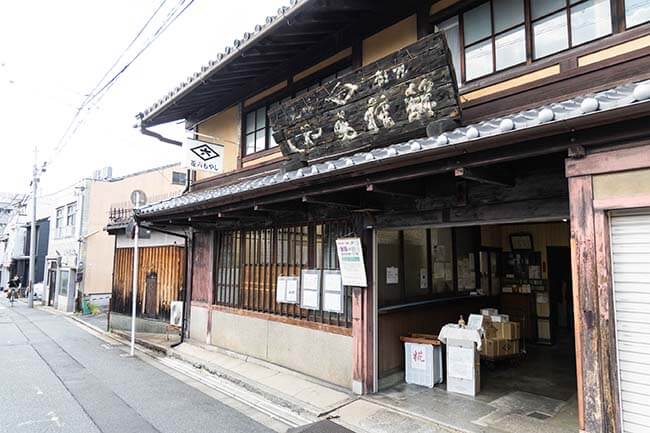Seed Koji Traditions Kept Alive by Kyoto’s Artisans
Jan 09,2025
Seed Koji Traditions Kept Alive by Kyoto’s Artisans
Jan 09,2025
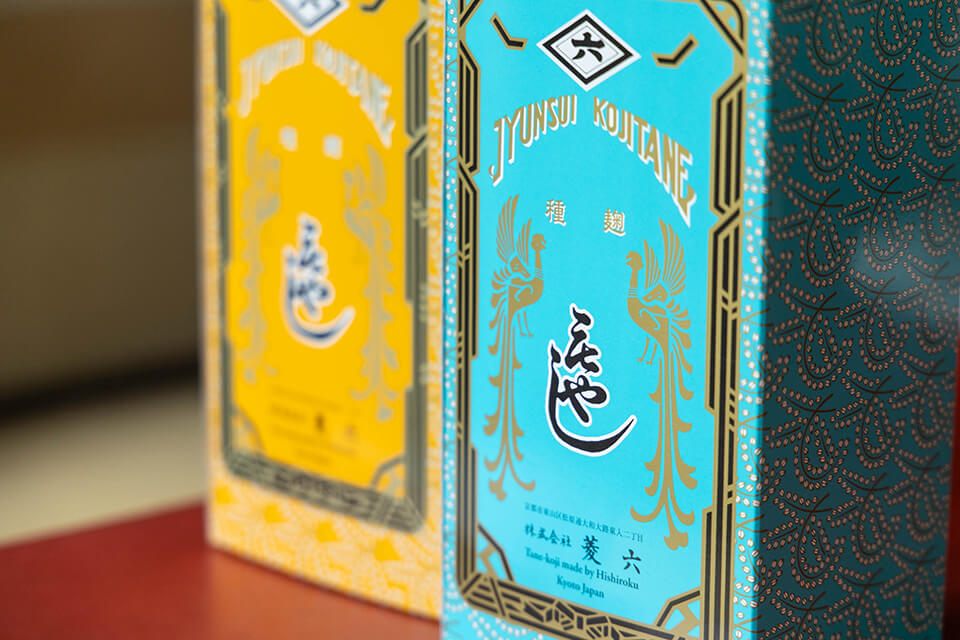

Familiar fermented products in our daily lives include miso, soy sauce, mirin rice wine, saké, and shochu distilled alcohol spirits. Koji rice malt is essential to craft these fermented products. But do you know where koji itself is produced? To answer this question, we visited Hishiroku Moyashi, a long-standing Kyoto seed koji producer that has been in business for over 300 years, and spoke with the owner Sukeno Akihiko.
Hishiroku Moyashi is located in Higashiyama, Kyoto, not far from the Rokuharamitsu-ji temple. Founded over 300 years ago, this revered business is Kyoto’s only seed koji producer.
Seed koji, also called moyashi, is an essential ingredient for making koji and is made by cultivating koji mold. As the name implies, they are literally seeds that grow into koji. Hishiroku Moyashi presently sells seed koji wholesale to some 2,000 brewers and distillers of miso, soy sauce, mirin, saké, and vinegar. Seed koji producers carry out vital work that upholds Japan’s fermentation culture.
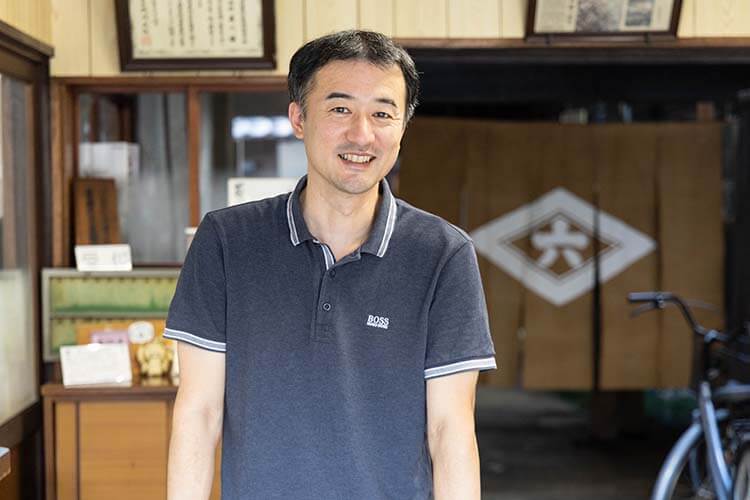
Hishiroku Moyashi is headed by Sukeno Akihiko. After graduating from Waseda University, he studied at the Department of Brewing and Fermentation at the Junior College of Tokyo University of Agriculture before taking over the family business.
“The word ‘moyashi’ is mentioned in the Engi-Shiki, an ancient set of government statutes written in the Heian period (794 to 1185), referring to the spongy green spores that grow on rice. Today, we call these koji or seed koji. Apparently, at some time in the past, these spores came to be called moyashi. Near the end of the Heian period, the first koji producers were established and licensed merchants received exclusive rights to produce and sell koji. During the reign of Ashikaga Yoshimochi, the fourth shogun of the Muromachi shogunate (1336 to 1573), there were around 350 saké brewers in Kyoto that bought koji from the koji merchants. Over time, however, the saké brewers began making their own koji and eventually the koji merchants collapsed. I believe that some of the koji merchants had little choice but to start selling seed koji, the starter strain needed to make koji.”
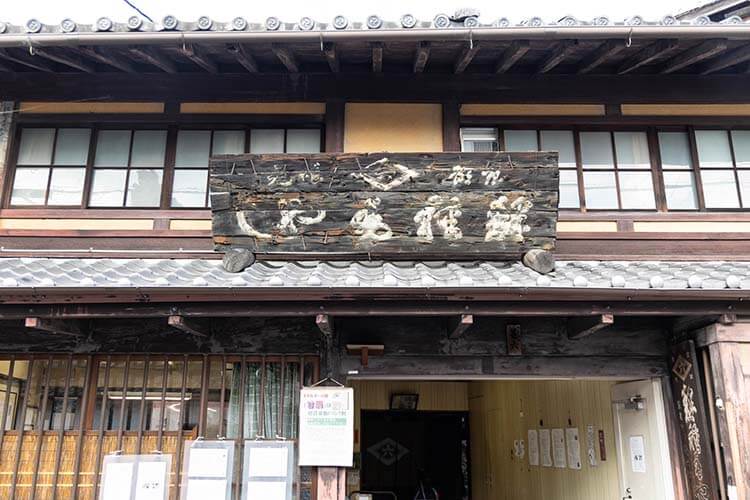
The sign, which has seen many decades pass, displays the Hishiroku emblem and declares that they sell Seed Koji Moyashi
The exact year when Hishiroku Moyashi was founded is unknown, and Sukeno himself doesn’t know how many generations of owners there have been.
“Moyashi producers were not in the habit of keeping records and tended to pass on their methods orally. We did find Hishiroku Moyashi’s name mentioned in the publication of a competitor that dates to 1769. The competitor held Hishiroku up as an example of what not to do, writing ‘Hishiroku is a trend-follower and quickly comes out with new products, but they almost always fail. Our business, however, is committed to making the products we already have.’ (laughs) We use this unflattering mention as the grounds for saying we have been in business for over 300 years.”
At the start of the Showa period (1926 to 1989), there were dozens of seed koji producers, but due to a variety of factors such as not finding successors to run the businesses or failing equipment, there are only around ten left today in the whole country. Hishiroku Moyashi is the only seed koji producer remaining in Kyoto.
The process of making seed koji involves steaming shaved brown rice, sprinkling it with koji mold, and maintaining the temperature and humidity that the koji mold thrives in. The koji mold is cultivated for around 120 hours to nurture the spores and then the finished product is dried. The type of mold used depends on the application, and the color varies according to the type of mold spores.
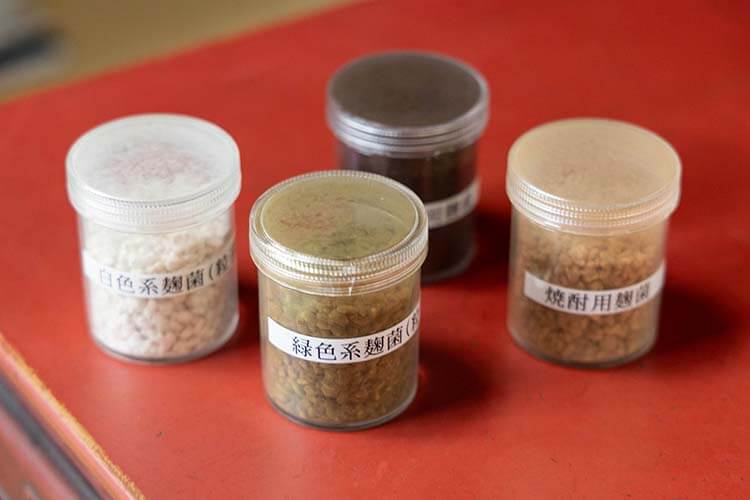
White-colored seed koji is used for miso and amazake (a sweet drink made from fermented koji); green for saké and mirin; black for awamori (a distilled alcoholic beverage from Okinawa); and brown for shochu
“The best seed koji has lots of spores attached. The starter strain for our koji mold has been passed down from generation to generation. In the past, producers didn’t know a lot about molds, but today we use laboratory equipment like microscopes and laminar flow cabinets to isolate the molds. In essence, we set up the conditions so only one type of mold spore will grow on the rice. For some products, we will blend a couple of koji molds.” Hishiroku Moyashi will also prepare special seed koji tailored to the demands of manufacturers or brewers based on the 40 or so products listed in their catalog.
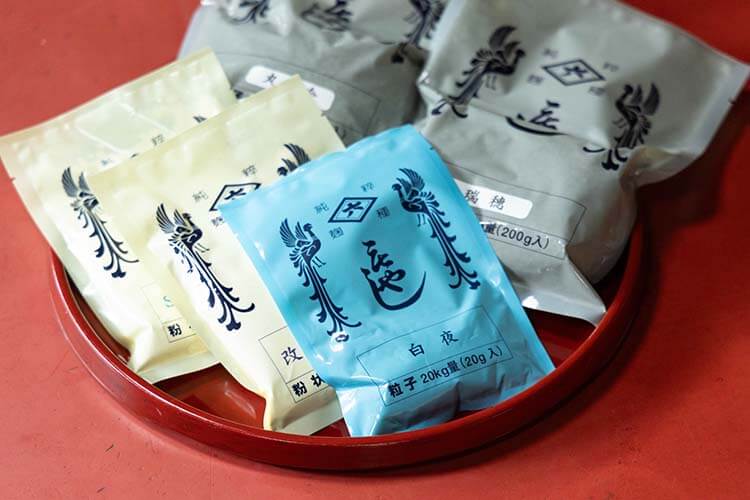
A few of Hishiroku Moyashi’s products. Byakuya [White Night] in the foreground is the most recently developed seed koji product. It is well regarded for giving saké a clean sweetness.
“Probably the most important thing we do as a seed koji producer nowadays is offer advice to our clients. After working with the client and getting feedback like ‘It definitely changed our saké’ or ‘We’ve started winning gold medals’, it really feels worthwhile, you know. (laughs) I think our future is set as long as we can preserve our current base. Our world involves many microorganisms and there are many uncertain factors, such as the fact that the rice we use varies somewhat every year. We want to continue to do research and produce seed koji with more precision.”

Sukeno is also involved in promoting koji, such as holding workshops
As a seed koji producer who sustains Japan’s fermentation culture, Sukeno feels raising awareness of koji is an important challenge.
“Even though there are more people interested because of the current popularity of fermented foods, in general, people have very few chances to experience koji first-hand. No matter how familiar people are with miso or soy sauce, they don’t know about the koji that underpins these products. That’s why I hold workshops and give interviews. I almost never say no to anyone who wants to talk about our work.”
Sukeno has been running koji-making workshops a couple of times a year for several years now. Participants learn a lot over the three days, starting with making koji using commercially available fermenters and steaming baskets, touring Hishiroku’s production facilities, and having a sit-down class on koji. The workshops are very popular and fill up fast. People even attend from overseas. If you’ve ever wanted to try making koji yourself, consider signing up to a workshop.
Hishiroku Moyashi’s online shop sells products for home use. In addition to seed koji and dried rice koji, the shop’s rice koji powder, which is dried rice koji made into a powder form, is a hidden hit product.
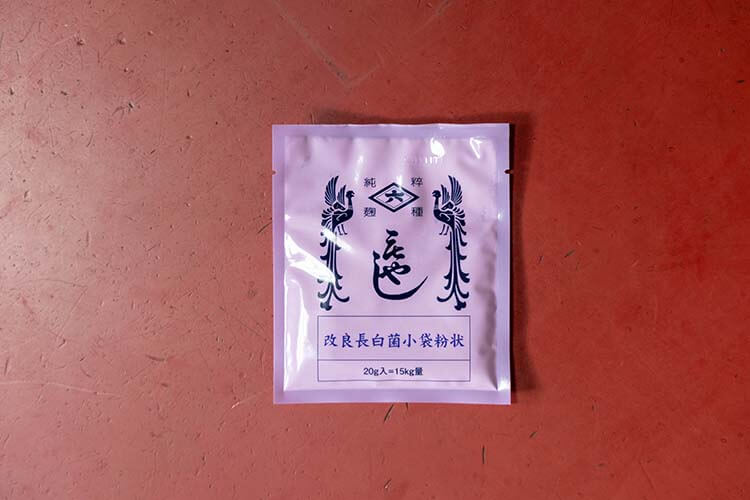
This seed koji produced with white koji spores is suitable for making amazake or miso
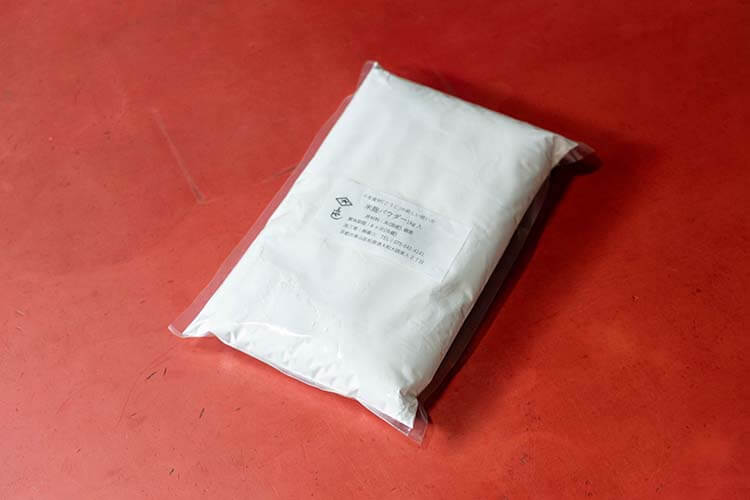
A large bag of rice koji powder. When mixed with wheat flour or rice flour, the resulting dough will become moist due to the actions of the koji enzymes.
“The rice koji powder was originally inspired by the powdery digestive medicines [that are common in Japan]. We have some bakers as clients who replace about five percent of the flour with the powder when baking bread. Because of the powder, the dough when baked has a finer consistency and is moister. We have a mini size as well that many people buy as a souvenir of Kyoto or as a gift for people who appreciate fermentation culture.”
The rice koji powder can also be used to make salted koji without any lumps. If you make salted koji with dried rice koji, you normally have to let it mature for about 10 days. But with rice koji powder, the salted koji is ready the next day. Using the powder to make amazake results in a smooth sauce-like texture, which is perfect for people who dislike lumps or graininess. There are many other ways it can be used, such as sprinkling the powder on meat to make it more tender and juicier when cooked.
“For my lunch, I add cheap instant miso and hot water to a bowl and after it has cooled down to a drinkable temperature, I stir in a teaspoon of rice koji powder. It’s as delicious as fresh miso soup, and I highly recommend it.”
